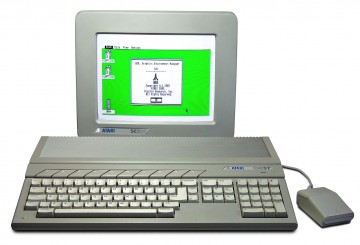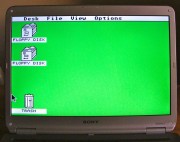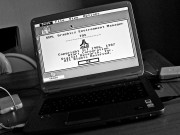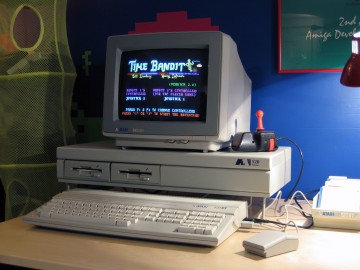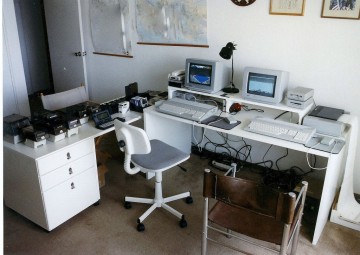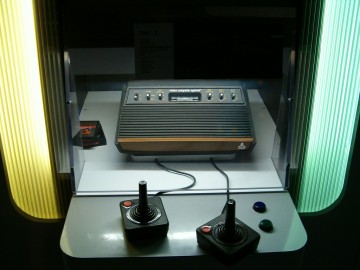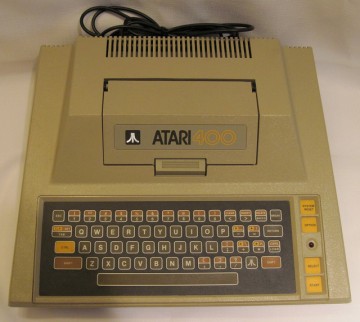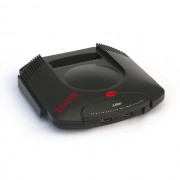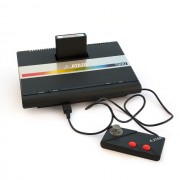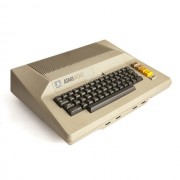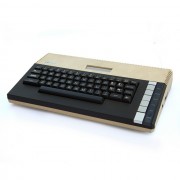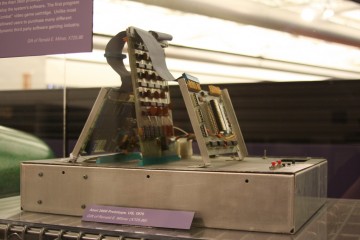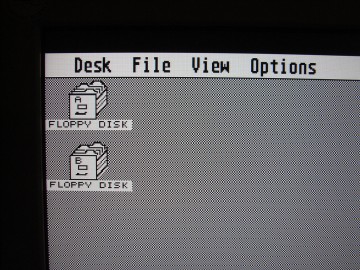
Native resolution 1280x1024 so the display is exactly twice as wide as the ST Hi Resolution image. Unfortunately the 640x400 image is scaled vertically by the monitor to become 640x480, so we see a stretched rows of pixels every 8 or so rows. Smoothing is switched off using the OSD to get the perfect black and white tones. This is my preferred display.
Bild: gingerbeardman

